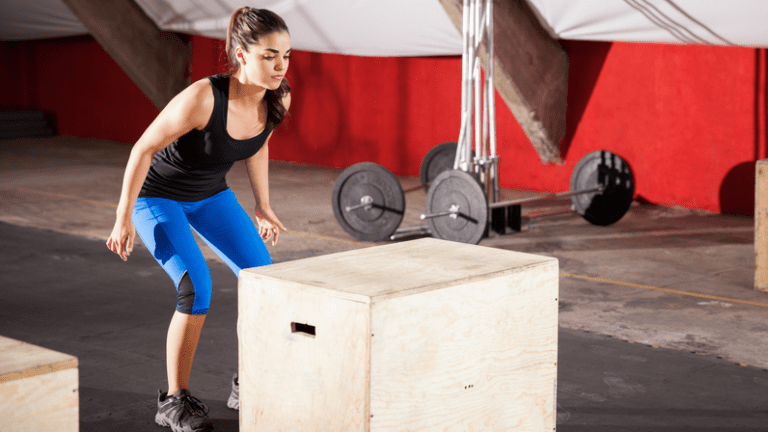Plyometrics: Explosive Results from Explosive Training
What exactly are plyometrics?
As early as the 1920’s, track and field athletes recognized the value of jump training, known today as plyometrics. In the 1950s and 1960s, Dr. Yuri Verkhoshansky began publishing research on various exercises and described the results of his “shock method”. This method (which he popularized with the depth jump) is characterized by a powerful stretch of the muscles, followed by an immediate explosive contraction. This type of training helps produce strong physiological changes that can result in greater power production. In a depth jump, the athlete stands on top of a box (12-42” tall), steps off, lands, and immediately performs a powerful jump from the floor; similar to pushing down on a spring. After you release the spring, it rapidly expands. Our bodies are a bit more complicated than a simple spring, but the effects and basic actions are extremely similar. Today, plyometrics are as popular as ever and are utilized for all fitness levels and ages!
Now that you know how plyometrics work, how can you get started?
*Warning: plyometrics are very dynamic in nature and can be dangerous if performed too early or improperly.
The National Strength and Conditioning Association recommends that athletes have a 1 rep squat max of 150% of body weight and can perform 5 reps at 60% in 5 seconds or less before beginning lower body plyometrics (a 150 lb athlete should be able to squat 225 lbs once and perform 5 reps with 90 lbs in 5 seconds or less).
The guideline for the upper body is the ability to perform 5 clap push-ups in a row. Until these guidelines are met, explosive training should probably be kept to sport specific drills. After strength requirements have been met, it is best to have the athlete begin with ground-based training, such as scissor jumps, hops, and various forms of bounding. For the upper body, clap push-ups and medicine ball throws are great introductions to basic plyometric work.
Once the athlete is ready to progress, begin with depth jumps as described earlier. *Note: heavier athletes may have an increased risk of injury from progressing too quickly to high-intensity plyometrics, and the NSCA recommends athletes heavier than 220 lbs perform depth jumps from no higher than 18”. Plyometric push-ups are performed by starting with the hands on 2 boxes (3-12” high), dropping to the floor, and performing an explosive push-up.
From these basic exercises, athletes can progress to multiple variations, such as utilizing multiple boxes or performing multiple plyometric push-ups. For most young athletes, these simple exercises are all that is needed to provide great results. Always perform plyometrics when well recovered; fatigue greatly lowers its effectiveness. Allow 48-72 hours rest between sessions, and start slowly. The possibilities are endless and the results can be dramatic, so go build up your springs!
Ready to start incorporating plyometrics into your training? Check out our YouTube channel for tons of videos with different exercises and drills. Or find a coach in your area who can design a training plan specific to your goals and needs.
——————————————————————————–
CoachUp is the safest and easiest way to find a coach for personalized training. With our 100% money-back guarantee and vetted coaches, anyone can achieve their full athletic potential. Find your perfect coach today and become the athlete you want to be!
How useful was this post?
Click on a star to rate it!
Average rating 0 / 5. Vote count: 0
No votes so far! Be the first to rate this post.




